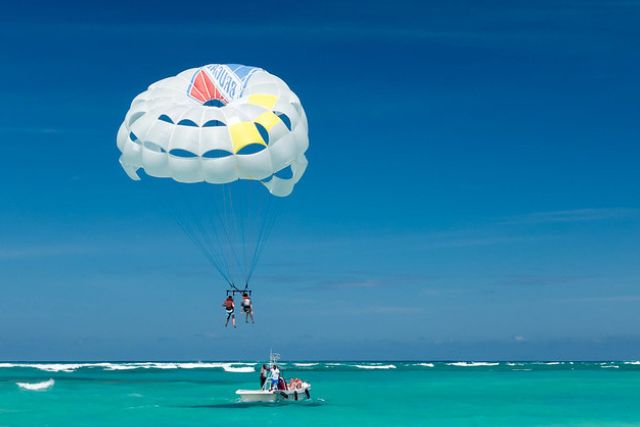Are you daring? And looking for your next daring challenge? Let me tell you what is parasailing and why you should try it. Parasailing is a fun and exciting water activity where a person is lifted into the air while being pulled by a moving boat. When you try parasailing, you wear a harness that’s connected to a parachute. As the boat speeds up, the parachute catches the wind and lifts you into the air. You will feel like you are flying in the air. You can fly so high like sometimes 200 to 500 feet above the water and you can have an amazing view.
It sounds cool but its not that easy. Its also risky for people who have fears and have low heart for risks and challenges. That’s why mostly daring people go there to accept that challenge and try it. If you are also a daring person and love to take challenges then parasailing is the best next dare to go.
What is Parasailing?
Parasailing looks easy when you watch it from the bottom. But the experience is different when you are in the air. Don’t worry, there is no need for you to drive. Furthermore, you do not need to learn to fly to experience this adventure. All you have to do is sit in the harness and hold it tightly. When the boat starts, it will pull you, and as the boat moves, you will start going up in the air. It feels like you are flying, but it is easy and more fun.
How Parasailing Differs from Other Air Sports
Parasailing is often confused with other air sports, but each one has its own style, thrill, and kind of adventure. Let’s take a look at how parasailing stands apart from the rest:
Paragliding:
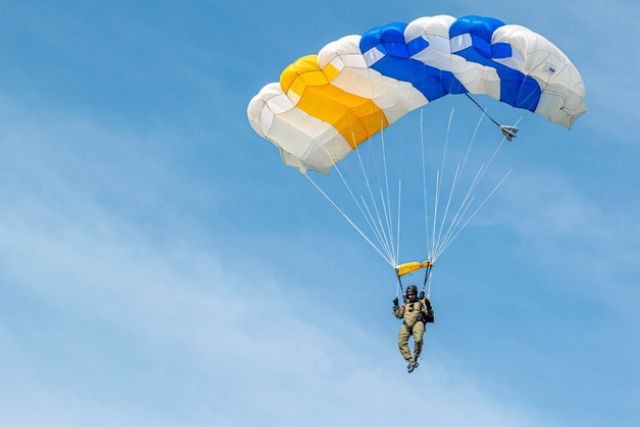
Paragliding is all about flying on your own. You run off a hill or mountain with a big fabric wing, and then you glide through the air by using wind currents. It takes a bit of training and control, but the feeling of freedom is amazing. Unlike parasailing, there’s no boat pulling you you’re the pilot here. It’s more daring and gives you full control over where you fly.
Parachuting:
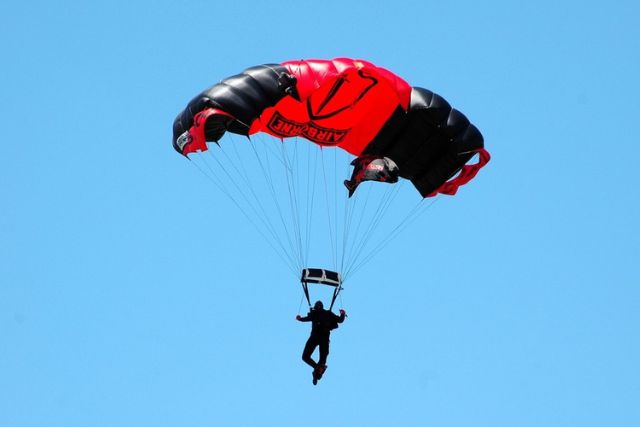
Parachuting (or skydiving) is the sport where you jump out of a plane with a parachute. Yes, it’s as wild as it sounds! You fall really fast through the sky before opening your parachute to slow down and land safely. It’s a huge rush of adrenaline, but also more intense and not as calm as parasailing. In parasailing, you go up slowly and stay safely attached to the boat.
Hang Gliding:
Hang gliding looks like you’re flying with giant bird wings. You lie under a metal-framed wing and launch from a hill or mountain. You steer by shifting your body, and it feels like real flying. Hang gliding needs practice and guts, as you’re flying solo. Parasailing, on the other hand, is more relaxed the boat does the work, and you just enjoy the ride.
Types of Parasailing
After knowing What is Parasailing, the next thing you may wonder is that there’s more than one way to enjoy parasailing. While the thrill is always there, the setup can be a bit different depending on where and how you do it.
1. Winch Boat Parasailing
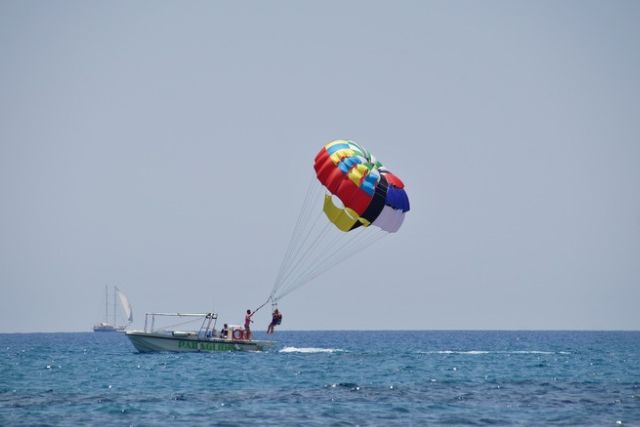
This is the most common type, especially at beaches and resorts. You take off and land directly from a special boat. It’s super safe and smooth because the boat has a machine (called a winch) that controls the rope. It is great for beginners and super easy to enjoy!
2. Beach or Platform Parasailing
In this type, you take off from the beach or a fixed platform near the water. A boat still pulls you, but you’re already up on land when the ride begins. It’s just as fun, but not as common anymore, because winch boats are more popular and safer for takeoff and landing.
3. Triple or Tandem Parasailing
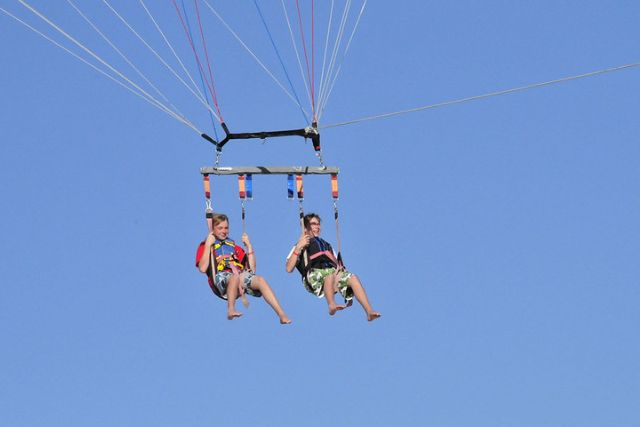
Not exactly a different setup, but a different experience! You can fly solo, with a friend (tandem), or even as a group of three. It’s a great option if you’re a bit nervous or just want to share the fun with someone else.
Is Parasailing Safe?
Yes, parasailing is generally very safe, especially when done with a trusted company and the right safety gear. Thousands of people try it every year without any problems! Before you take off, you’ll be given a harness, a life jacket, and sometimes even a helmet. Make sure you have travel accessories before you leave for the trip and especially for the parasailing. The staff will check everything and explain how it works. You don’t need any experience, just follow the simple instructions and enjoy the ride.
The boat captain controls how high you go and makes sure everything is smooth. For safety reasons, parasailing is not performed if the weather is not suitable for this adventure. For example, it can not be done if it’s raining or the wind is strong. Because safety comes first.
To stay extra safe:
- Always choose the licensed company
- Listen carefully to the crew
- Make sure your gear fits well
Parasailing is a fun adventure, and it is safe too if you follow and obey all the rules.
What to Expect on Your First Parasailing Ride
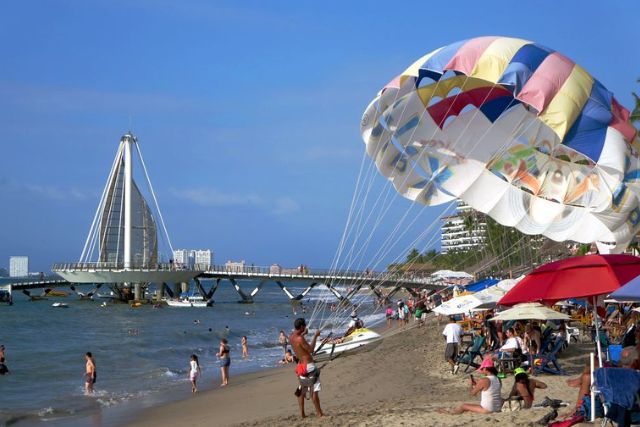
Are you going to parasail for the first time and feeling worried? Don’t worry, it is safe and more fun than it looks from the ground. Here are the complete details of how it happened from the start to the end.
1. A Quick Safety Talk
The team will tell you everything before you go into the air. Listen carefully when they tell you about the safety gear. Also, they will explain to you how to sit and what to do when you want to come down to the ground. The instruction is super easy, and nothing is tough to learn. All you have to do is stay calm and relax, and obey the rules, and enjoy the brilliant experience of parasailing adventure.
2. Getting Geared Up
You’ll wear a harness which will connect you to the parachute and a life jacket for extra safety. The crew checks all your straps to make sure everything fits just right.
3. Takeoff Time!
If you’re parasailing from a boat, you’ll sit at the back while the boat slowly picks up speed. Soon, you’ll feel the parachute lifting you gently into the air — no jumping or running needed!
4. The Ride in the Sky
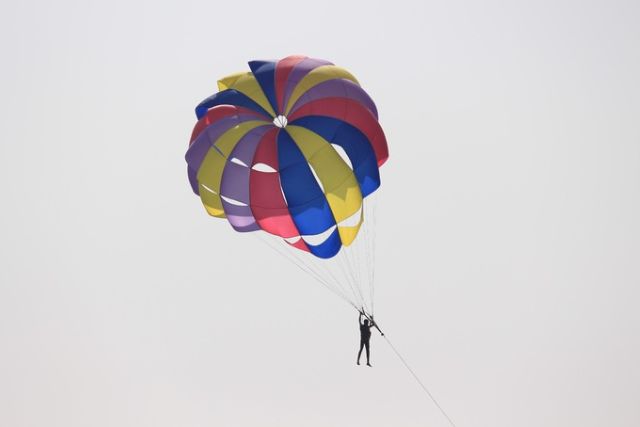
Once you’re up, it’s calm, peaceful, and quiet. You’ll float above the water with a stunning view. Depending on the ride, you may stay up for 5 to 15 minutes.
5. A Smooth Landing
As the ride ends, the boat slows down and gently brings you back to the platform or boat. Most landings feel like slowly sitting down and are super easy and smooth.
Bonus: Optional Dip
Some rides offer a “toe dip,” where the boat lowers you just enough to dip your feet in the water before lifting you back up. It’s totally optional, just let the crew know!
Best Places to Go Parasailing
Parasailing is amazing almost anywhere there’s water and a good view. But some spots just take it to the next level. Here are some of the most popular and breathtaking places around the world. From city skylines to tropical beaches, these places offer unforgettable views and sky-high excitement.
If you’re planning a big trip to explore thrilling destinations, whether by air or road, don’t miss this cross-country road trip guide.
Here are some of the top parasailing spots you should add to your adventure list:
Parasailing in Dubai, UAE
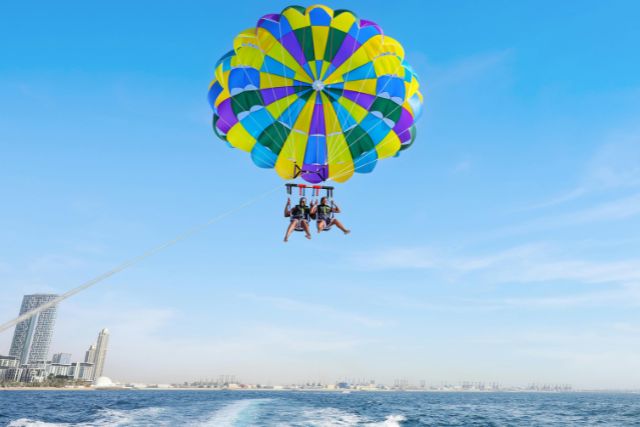
Best Location Jumeirah Beach, Marina Beach, The Palm Jumeirah
Dubai is one of the most famous places for parasailing — and for a good reason! You’ll fly over shiny skyscrapers, the stunning Palm Island, and the blue Arabian Gulf. It’s exciting, luxurious, and feels like floating above a dream city. This is easily one of the best parasailing experiences in the Middle East.
Who Can Go Parasailing?
Parasailing is generally safe and accessible for a wide range of people, but there are some basic requirements and restrictions:
Age:
Most parasailing operators allow children as young as 6 to 10 years old, depending on local laws and company policies. Always check with the specific provider.
Weight Limits:
A common minimum combined weight (for tandem or triple rides) is around 90–120 lbs (40–55 kg), and the maximum is usually 400–450 lbs (180–205 kg), to ensure safe lift-off and landing.
Health Requirements:
Participants should be in good general health. Those with heart conditions, recent surgeries, or pregnancy should avoid parasailing.
Children:
Yes, children as young as 6–10 years old can parasail, usually when accompanied by an adult in tandem rides.
Seniors:
Healthy seniors often enjoy parasailing. If you’re mobile and can follow safety instructions, age isn’t a barrier.
People With Disabilities:
Some parasailing companies offer adaptive equipment and support for individuals with physical disabilities. Contact providers in advance to discuss specific needs.
Frequently Asked Questions
Can a 10-Year-Old Parasail?
Yes, many companies allow 10-year-olds to parasail, usually with an adult and depending on weight and wind conditions.
Is There a Weight Limit For Parasailing?
Yes, typical limits range between 90–450 lbs, depending on tandem or solo flight and weather.
Can Seniors Go Parasailing?
Yes, if they are in good health and meet the safety requirements.
Can You Parasail if You Can’t Swim?
Yes, since participants wear life jackets and take off/land from a boat, swimming is not required.
Related Readings: Havasu Falls Without Hiking

